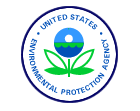
|
Emerging Technology Report:
Cross-Flow Pervaporation System For Removal
Of VOCs From Contaminated Water
This document is available in the Adobe Acrobat PDF Format.
Click here for information about Portable Document File (PDF) Formats.
or
Click here to directly download the Acrobat Reader.
(To view the PDF, it is recommended that you use the latest version of Acrobat Reader.)
Cross-Flow Pervaporation System For Removal of VOCs From Contaminated Wastewater (921K)
U.S. EPA Superfund Innovative Technology Evaluation (SITE) Program
Cross-Flow Pervaporation System
Wastewater Technology Centre
ABSTRACT
Pervaporation is a process for removing volatile organic compounds (VOCs) from contaminated water. The performance of the cross-flow pervaporation system increases with temperature. Permeable membranes that preferentially absorb VOCs are used to partition VOCs from the contaminated water. The VOCs diffuse from the membrane and water interface through the membrane and are drawn off by a vacuum pump. Upstream of the vacuum pump, a condenser traps and contains the permeating vapors, condensing all of the vapor,
therefore, allowing no discharge to the atmosphere. Pervaporation can be applied to aqueous waste streams (groundwater, lagoons, leachate, and rinse water) contaminated with VOCs, such as solvents, degreasers, and gasoline. The technology is applicable to the types of wastes currently treated by carbon adsorption, air stripping, and reverse osmosis separation. A cost comparison, generated by Wastewater Technology Centre, showed that pervaporation can be competitive with air stripping and activated carbon to treat waste with low VOC concentrations. A pilot plant with a maximum removal efficiency of 99 percent was built and evaluated in-house with toluene and trichloroethylene.
Back to SITE Home Page
Posted June 22, 1999
|

